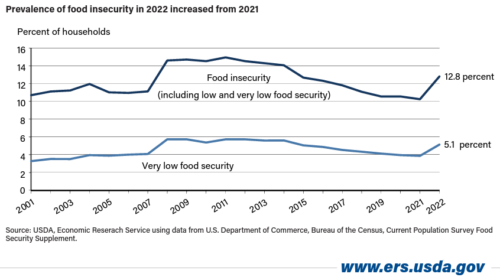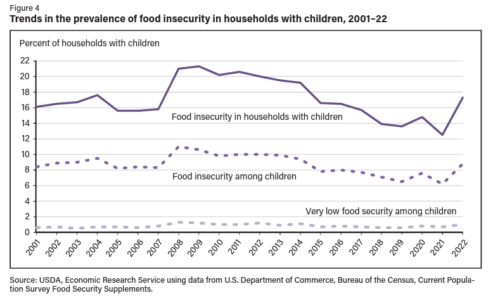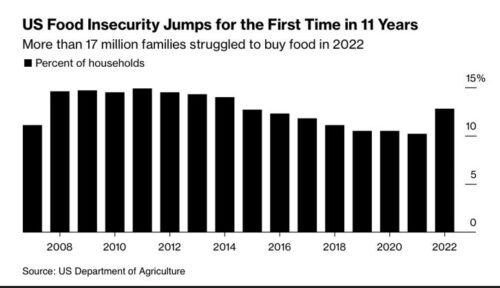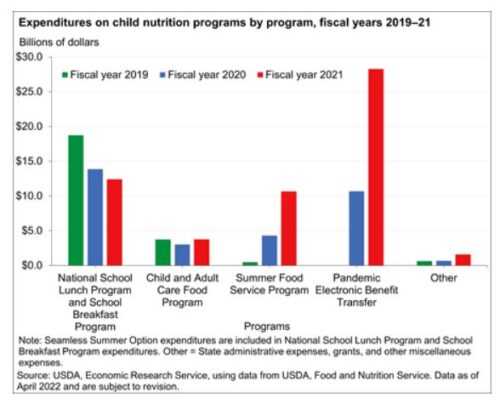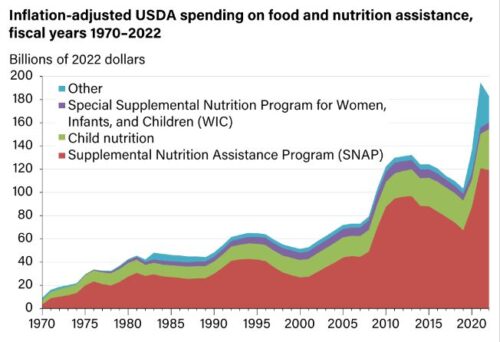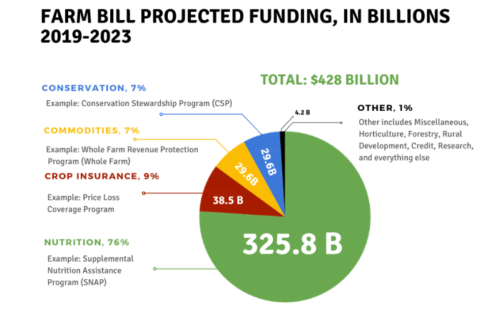Weekend reading: Equitable access to USDA’s food assistance programs
I was guest editor for a supplement to the American Journal of Public Health: Policies and Strategies to Increase Equitable Access to Family Nutrition.
It is open access so you can access it here.
I wrote the lead editorial: Equitable Access to the USDA’s Food Assistance Programs: Policies Needed to Reduce Barriers and Increase Accessibility. 113(S3), pp. S167–S170.
This special supplement to AJPH deals with a critically important topic: enabling and increasing access to federal nutrition assistance programs among low-income Americans who are eligible for these programs but unaware, unable, or unwilling to participate in them. To help identify the barriers to nonparticipation and to recommend policies to reduce them, the Robert Wood Johnson Foundation funded research projects aimed at these goals, especially as they pertain to families with young children. PDF/EPUB
Editor’s choice
- What Will It Take to Bring Equity to Federal Nutrition Support Programs? Rachel Bleiweiss-Sande and Yuka Asada. 113(S3), pp. S164–S165. PDF/EPUB.
Perspectives
- The Child and Adult Care Food Program: A Critical Component of the Nutrition Safety Net for More Than 50 Years; Jamie F. Chriqui and Yuka Asada. 113(S3), pp. S171–S174. PDF/EPUB. Supplemental Material
- In Pursuit of Equitable Access in Federal Food and Nutrition Assistance Programs. Yuka Asada, Rachel Bleiweiss-Sande, Carolyn Barnes, Hannah Lane and Jamie F Chriqui. 113(S3), pp. S175–S179. PDF/EPUB.
- Barriers to Participation in the Child and Adult Care Food Program for Early Childhood Care Providers. Tebecca Franckle and Maria Boyle. 113(S3), pp. S180–S182. PDF/EPUB.
- The Child and Adult Care Food Program (CACFP): Nutritional Benefits and Barriers Hindering Participation by Home-Based Childcare Providers. Erinosho Temitope and Mary Story. 113(S3), pp. S183–S185. PDF/EPUB.
- Advancing the Equitable Reach of the Child and Adult Care Food Program: A Case for Considering Rural Communities’ Unique Needs: Jennifer A. Garner. 113(S3), pp. S186–S187. PDF/EPUB.
- Making Family Childcare More Resilient: Child and Adult Care Food Program Policies During the COVID-19 Pandemic May Point the Way Forward. Elizabeth T. Powers. 113(S3), pp. S188–S190. PDF/EPUB Supplemental Material.
- State Regulations Set the Stage for Child and Adult Care Food Program (CACFP) Participation in Home-Based Childcare: Hailey Heinz and Elizabeth Yakes Jimenez. 113(S3), pp. S191–S193. PDF/EPUB.
- Untapped Potential: License-Exempt Home-Based Providers and the Child and Adult Care Food Program. Gina Adams, Catherine Kuhns and Fernando Hernandez-Lepe. 113(S3), pp. S194–S197. PDF/EPUB.
- Leveraging the Child and Adult Care Food Program to Facilitate Healthy Behaviors and Environments in Early Care and Education Settings. Daniel A. Zaltz. 113(S3), pp. S198–S201. PDF/EPUB.
- Bold Action Needed for Equitable Access to Nutrition Assistance by All. Wendi Gosliner and Lorrene D. Ritchie. 113(S3), pp. S202–S205. PDF/EPUB.
- Federal Nutrition Assistance Programs and Adolescent Food Insecurity: A Complicated Picture. Kristin Mmari. 113(S3), pp. S206–S209. PDF/EPUB.
- Making Supplemental Nutrition Assistance Program Enrollment Easier for Gig Workers. Dory Thrasher. 113(S3), pp. S210–S214. PDF/EPUB.
Notes from the field
- Perspectives of Home-Based Child Care Providers in New Mexico on Barriers and Facilitators to Participating in the Child and Adult Care Food Program, 2021–2022. Hailey Heinz, Monica Fiorella Asencio Pimentel, Darlene Castillo, Yoselin Cordova, Rebecca Fowler, Dana Bell and Elizabeth Yakes Jimenez. 113(S3), pp. S215–S219. PDF/EPUB Supplemental Material
-
Women, Infants, and Children (WIC) Enrollment: Learning From Key Informants to Enhance Utilization. Karen Ganacias and Janine A. Rethy. 113(S3), pp. S220–S223. PDF/EPUB.
-
Adequacy of SNAP Benefits for Indiana Households, 2022. Angela M. Babb, Shellye A. Suttles, Isabelle Daellenbach, Jenna H. DuPilka and Daniel C. Knudsen. 113(S3), pp. S224–S226. PDF/EPUB
-
Emergency Food Support Preference and Usage During COVID-19: A Neighborhood Study of Low-Income Black Mothers? Use of School-Based Food Distribution and P-EBT. Simon E. Fern, Rachel T. Kimbro, Marbella Eboni Hill and Cayce C. Hughes. 113(S3), pp. S227–S230. PDF/EPUB Supplemental Material
Research articles
- Opportunities to Improve Access to and Retention in the Child and Adult Care Food Program: Key Recommendations From Early Childcare Providers in Illinois, December 2020–July 2021. Yuka Asada, Rebecca Schermbeck, Kendall Thiede and Jamie F. Chriqui. 113(S3), pp. S231–S239. PDF/EPUB Supplemental Material.
- Association of the COVID-19 Pandemic With Women, Infants, and Children (WIC) Receipt Among Pregnant Individuals: United States, 2016–2022. Savannah Busch, Jennifer A. Andersen, Don E. Willis, Pearl Anna McElfish, Sharon Reece, Dominique DuBois and Clare C. Brown. 113(S3), pp. S240–S247. PDF/EPUB

